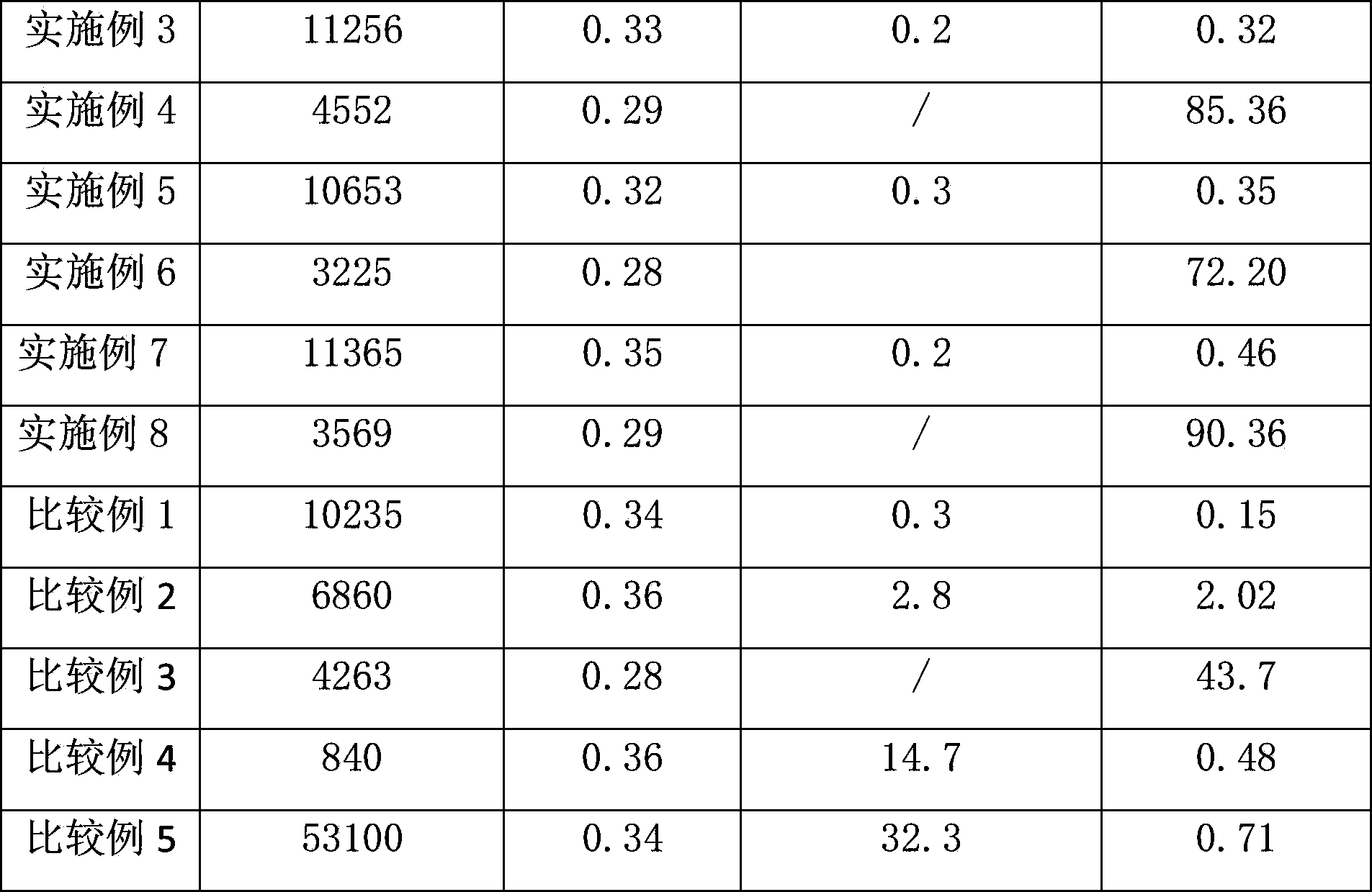Catalyst component for ethylene polymerization and catalyst thereof
A technology of ethylene polymerization and catalyst, applied in the field of catalyst components, which can solve the problems of high polymer fine powder content and small catalyst particle size
- Summary
- Abstract
- Description
- Claims
- Application Information
AI Technical Summary
Problems solved by technology
Method used
Image
Examples
Embodiment 1
[0043] 1. Preparation of catalyst components
[0044] Under the protection of nitrogen, 4.8 grams of magnesium chloride, 90 milliliters of toluene, 4.0 milliliters of epichlorohydrin, 12.5 milliliters of tributyl phosphate, and 0.5 ml of ethanol were added to the reaction kettle. , reacted for two hours, added 1.5 grams of titanium trichloride and 1.4 grams of phthalic anhydride, continued the reaction for one hour, cooled to -28°C, added 56 ml of titanium tetrachloride dropwise, gradually raised the temperature to 85°C, and kept the temperature for one After several hours, the mother liquor was filtered off, washed several times with inert diluent toluene and organic solvent hexane, and then dried to obtain magnesium / titanium-containing solid a.
[0045] Add 6 grams of magnesium / titanium-containing solid a to another reaction kettle, add 120ml of hexane, and add 3.5ml of SiCl dropwise at a stirring speed of 320rpm and a temperature of 20°C 4 , under the condition of stirring...
Embodiment 2
[0049] Catalyst preparation method is the same as embodiment 1.
[0050] Polymerization evaluation conditions: a stainless steel reaction kettle with a volume of 2 liters, after being fully replaced by hydrogen, inject about 0.5 liters of hexane with nitrogen, inject 2 ml of triethylaluminum-hexane solution with a concentration of 1 mmol / ml with a syringe, and then Add 50 mg of catalyst solids component b, and make up about 1 liter of hexane in total.
[0051] After the feeding is completed, the temperature is raised and hydrogen and ethylene are introduced successively, 6.8×10 5 Pa Hydrogen, 3.5×10 5 Pa ethylene, the polymerization temperature is 85°C, react for two hours, lower the temperature, drain the residual pressure in the kettle, release the polymer slurry material, filter off the hexane, dry the polymer to obtain polyethylene powder, the results are shown in Table 1.
Embodiment 3
[0053] Catalyst preparation method is with embodiment 1, SiCl 4 The dosage was changed to 1.5ml. 8.5 g of a particulate catalyst component c containing 4.2% by weight of Ti was obtained.
[0054] Polymerization evaluation conditions are the same as in Example 1, and the results are shown in Table 1.
PUM
 Login to View More
Login to View More Abstract
Description
Claims
Application Information
 Login to View More
Login to View More - Generate Ideas
- Intellectual Property
- Life Sciences
- Materials
- Tech Scout
- Unparalleled Data Quality
- Higher Quality Content
- 60% Fewer Hallucinations
Browse by: Latest US Patents, China's latest patents, Technical Efficacy Thesaurus, Application Domain, Technology Topic, Popular Technical Reports.
© 2025 PatSnap. All rights reserved.Legal|Privacy policy|Modern Slavery Act Transparency Statement|Sitemap|About US| Contact US: help@patsnap.com


